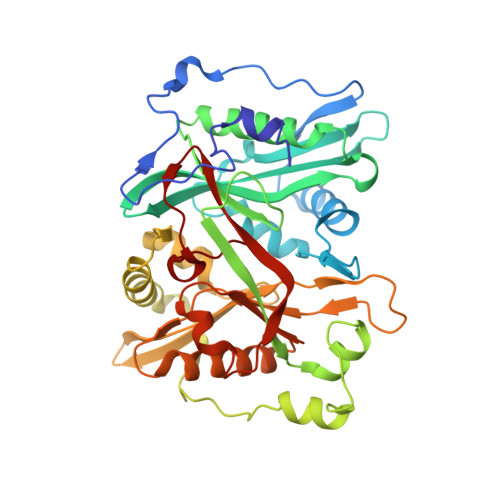Discovery of Pyridyl-Based Inhibitors of Plasmodium Falciparum N-Myristoyltransferase
Yu, Z., Brannigan, J.A., Rangachari, K., Heal, W.P., Wilkinson, A.J., Holder, A.A., Leatherbarrow, R.J., Tate, E.W.(2015) Medchemcomm 6: 1767
- PubMed: 26962430
- DOI: https://doi.org/10.1039/c5md00242g
- Primary Citation of Related Structures:
4UFV, 4UFW, 4UFX - PubMed Abstract:
N -Myristoyltransferase (NMT) represents an attractive drug target in parasitic infections such as malaria due to its genetic essentiality and amenability to inhibition by drug-like small molecules. Scaffold simplification from previously reported inhibitors containing bicyclic cores identified phenyl derivative 3 , providing a versatile platform to study the effects of substitution on the scaffold, which yielded pyridyl 19 . This molecule exhibited improved enzyme and cellular potency, and reduced lipophilicity compared to inhibitor 3 . Further structure-based inhibitor design led to the discovery of 30 , the most potent inhibitor in this series, which showed single-digit nM enzyme affinity and sub-¦̀M anti-plasmodial activity.
Organizational Affiliation:
Department of Chemistry , Imperial College London , London , SW7 2AZ , UK . Email: e.tate@imperial.ac.uk ; Tel: +44 (0)2075 943 752.






















